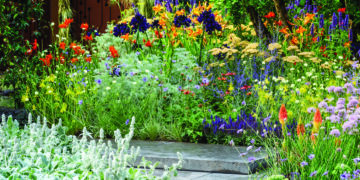February is an important month for gardeners who want to get a head start on the growing season. Here are some tips for what to do in your garden each week this month.
Week 1 (January 29 – February 4)
- Start sprouting early potato varieties in a bright place indoors or a greenhouse to aid earlier cropping.
- Clear ground for vegetables of weeds and cultivate for sowing the first seeds as soon as the opportunity arises.
- Plant garlic and shallot sets early in dry weather if the ground is dry enough to cultivate.
- Sow seeds of early varieties of cabbage, cauliflower, carrots, lettuce, and onions in a tunnel or glasshouse to get a head start on the season despite the conditions outdoors.
- Plant new fruit trees as soon as possible.
- Complete pruning of apple and pear trees and blackcurrant bushes within a couple of weeks.
Week 2 (February 5 – February 11)
- Sow early vegetables outdoors, such as garlic, shallots, early peas, broad beans, and onions when the soil dries enough.
- Tidy up old rhubarb crowns and remove weeds. Lift rhubarb for forcing indoors if you like bright red sticks.
- Start sprouting early potato varieties in a bright place indoors or a greenhouse to aid earlier cropping.
- Sow seeds of early varieties of cabbage, cauliflower, carrots, lettuce, and onions in a tunnel or glasshouse for early crops.
- Plant new fruit trees as soon as possible.
- Complete pruning of apple and pear trees and blackcurrant bushes within a couple of weeks.
Week 3 (February 12 – February 18)
- Plant new fruit trees and bushes within the next few weeks.
- Complete pruning of apple and pear trees and blackcurrant bushes as soon as possible.
- Plant garlic and shallot sets without delay if the ground is dry enough to cultivate.
- Sow vegetables such as early peas, broad beans, onions, and parsnips outdoors.
- Sow seeds of early varieties of cabbage, cauliflower, carrots, lettuce, and onions in a tunnel or glasshouse to get a head start on the season.
Week 4 (February 19 – February 25)
- Wait until the ground dries out before digging it over.
- Put in permanent vegetables such as rhubarb, globe artichokes, and asparagus.
- Plant asparagus crowns in well-drained soil in a sunny position.
- Plant garlic and shallot sets if the ground is dry enough to cultivate.
- Sow seeds of early varieties of cabbage, cauliflower, carrots, lettuce, and onions in a tunnel or glasshouse to plant out for early crops.
- Plant new fruit trees as soon as possible.
- Complete pruning of apple and pear trees and blackcurrant bushes within a couple of weeks.
Week 5 (February 26 – March 4)
- Start early varieties of cabbage, cauliflower, carrots, lettuce, and onions in a tunnel or glasshouse and plant out into better growing conditions during April or May.
- Take any opportunity to carry out early outdoor sowings, especially of onions from seed, leeks, parsnips, and sprouts.
- Plant garlic and shallot sets without delay as it is getting late.
- Plant out new herb plants if the ground is in good condition.
- Plant potatoes if the soil is in good condition.
- Prune apple and pear trees and blackcurrant bushes within a couple of weeks, but this can be done even after bud break if it is delayed.













